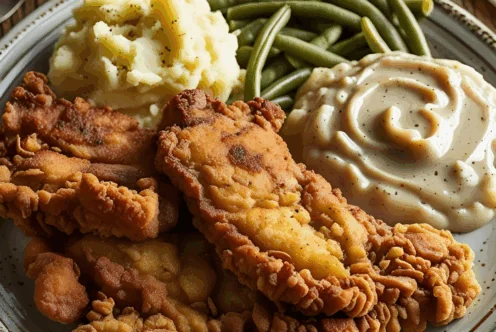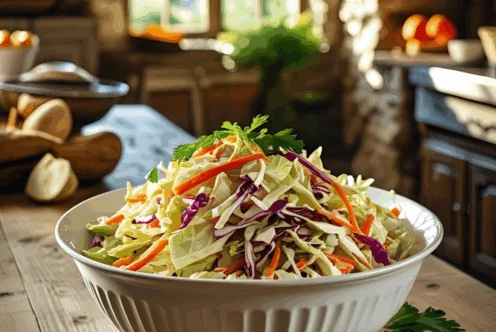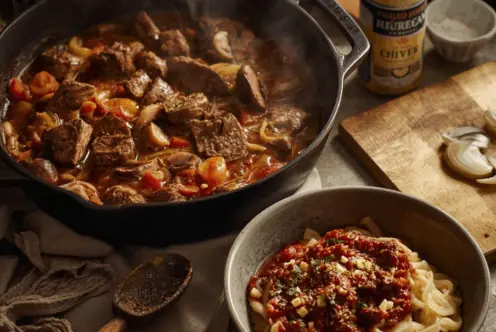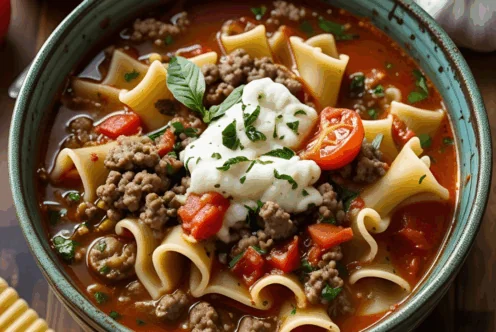Blog
Steam, Don’t Boil, Your Vegetables!
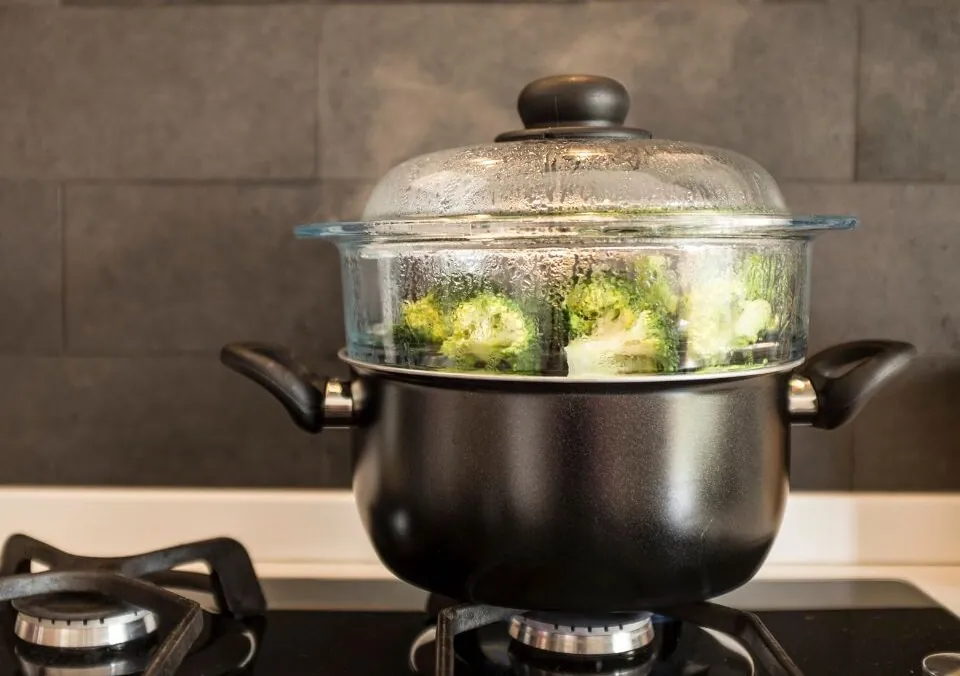
Growing up, many of us heard the same mantra: “Eat your vegetables!” Whether it was from parents, grandparents, or even beloved cartoons, the idea that vegetables are essential for health took root early. The truth is, vegetables are vital components of a balanced diet, loaded with essential vitamins, minerals, and antioxidants. These nutrients play a key role in promoting overall health, enhancing immunity, and reducing the risk of chronic diseases.
The Importance of Vegetables in Our Diet
Various studies have shown the connection between vegetable consumption and lower rates of conditions such as heart disease, high blood pressure, and some cancers. According to the Centers for Disease Control and Prevention (CDC), only 1 in 10 adults eats the recommended amount of fruits and vegetables. This highlights a significant gap in our dietary habits that needs addressing.
Nutritional Powerhouses
Vegetables come in countless varieties, each with unique benefits. Leafy greens like spinach and kale are high in iron and calcium, while cruciferous vegetables such as broccoli and Brussels sprouts contain compounds linked to cancer protection. Colorful vegetables, such as bell peppers and carrots, are packed with antioxidants and vitamins that can improve skin health and boost immunity.
The Harvard T.H. Chan School of Public Health emphasizes the importance of a variety of vegetables in our diet, as different colors often indicate different nutrients and health benefits. For instance, the bright orange color of carrots signals high levels of beta-carotene, which converts to vitamin A in the body, crucial for eye health.
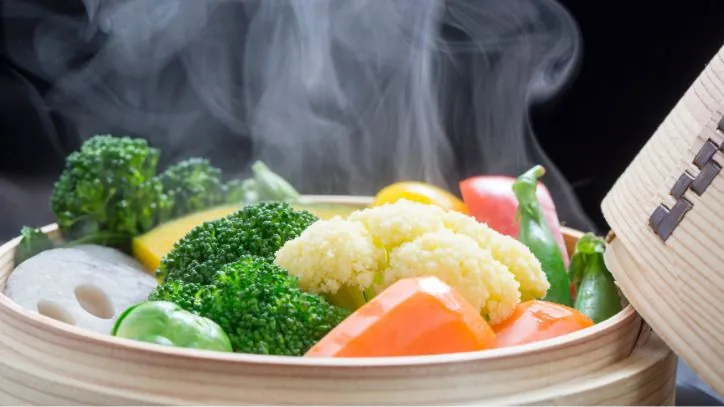
Cooking Methods Matter
While it is clear that eating vegetables is essential, how we prepare them can dramatically affect their nutrient content. Cooking methods can enhance or destroy vital components in vegetables. Two common cooking methods are steaming and boiling, each with distinct impacts on the nutritional profile of the vegetables.
Steaming Vegetables
Steaming involves cooking vegetables in a steam basket above boiling water, allowing them to cook without direct contact with the water. This method is highly regarded for many reasons. According to registered dietitian Jillian Kubala, steaming is the preferred method for preserving nutrients. Steamed vegetables retain their color and texture, and the heating method minimizes the leaching of water-soluble vitamins such as vitamin C and various B vitamins.
Boiling Vegetables
In contrast, boiling completely submerges vegetables in water, which can lead to significant nutrient loss, especially of those valuable water-soluble vitamins. Research indicates that boiling can reduce vitamin C levels by 30% to 50%, depending on the cooking time. The longer you boil the vegetables, the more nutrients seep into the water, resulting in a softer product but one that is nutritionally inferior.
Nutrient Retention is Key
Nutrient retention is crucial for maximizing the health benefits of vegetables. When we opt to steam instead of boil, we ensure that the majority of vitamins and minerals remain in the food we consume. High heat can also destroy phytonutrients—compounds that have various benefits, including anti-inflammatory and antioxidant effects.
Using the right cooking methods preserves not only the nutrients but also the flavor and visual appeal of vegetables, encouraging us to consume more. When vegetables look vibrant and taste great, we are more likely to include them in our overall diet.
Cooking Tips for Maximum Flavor and Nutrients
To further enhance the health benefits and enjoyment of vegetables, consider the following cooking tips:
- Season With Fresh Herbs and Spices: Adding fresh herbs, spices, or citrus juice can enhance flavor without the need for extra salt. Herbs such as basil, cilantro, and parsley not only add taste but also come with their own health benefits.
- Incorporate Healthy Fats: Pairing vegetables with healthy fats, like olive oil or avocado, can make certain nutrients more bioavailable. For example, studies from the American Journal of Clinical Nutrition suggest that adding a fat source can enhance the absorption of fat-soluble vitamins (A, D, E, and K) and phytonutrients.
- Pair With Protein: Combining vegetables with a good protein source can create a balanced meal. Options such as grilled chicken, tofu, or legumes not only provide essential amino acids but also improve the overall nutrient intake of your meal.
- Choose Frozen Vegetables: Frozen vegetables can be just as nutritious as fresh ones and often have the advantage of being frozen at peak ripeness, preserving their nutrients. According to the United States Department of Agriculture (USDA), there is little difference in nutritional values between frozen and fresh vegetables, making them a convenient and healthy option.
- Support Local Agriculture: One of my favorite tips is to buy fresh, local vegetables whenever possible. In Arizona, local farmers offer a variety of in-season options that can add flavor and nutrition to our meals. Visiting local farmers’ markets not only supports the local economy but often provides access to organic and fresher produce.
Conclusion: Enjoy Your Vegetables
Ultimately, cooking vegetables is an art and science that influences not only the taste but also the nutritional value of our food. While steaming is the preferred method for preserving nutrients, it’s essential to explore various cooking techniques and find what works best for your taste and lifestyle.
So, the next time you’re preparing a meal, remember to reach for the steamer instead of the pot. Enjoy your vegetables in myriad ways, whether it’s in a fresh salad, a stir-fry, or a veggie-packed soup. By being mindful of how you cook your vegetables, you are making a significant investment in your health that pays off in energy levels, vitality, and longevity.
Make vegetables a star in your kitchen, and don’t shy away from trying new preparing methods. The world of vegetables is vast, and each variety offers unique flavors and nutritional benefits. Treat your body well by cooking your vegetables thoughtfully, and reap the abundant benefits they provide!
Additional Resources
- Eating Vegetables: A Key to Health – Centers for Disease Control and Prevention
- The Nutritional Value of Vegetables – Harvard T.H. Chan School of Public Health
- Steaming vs. Boiling – Healthline
- Frozen Vegetables Nutritional Facts – USDA Food and Nutrition Service
By following these tips and incorporating a wide variety of vegetables into your diet, you’ll not only enjoy delicious meals but also significantly enhance your health! Check out the Fill Your Plate recipe database for great vegetable recipes the whole family will enjoy!
By Heide Kennedy, Arizona Farm Bureau Communications Intern













